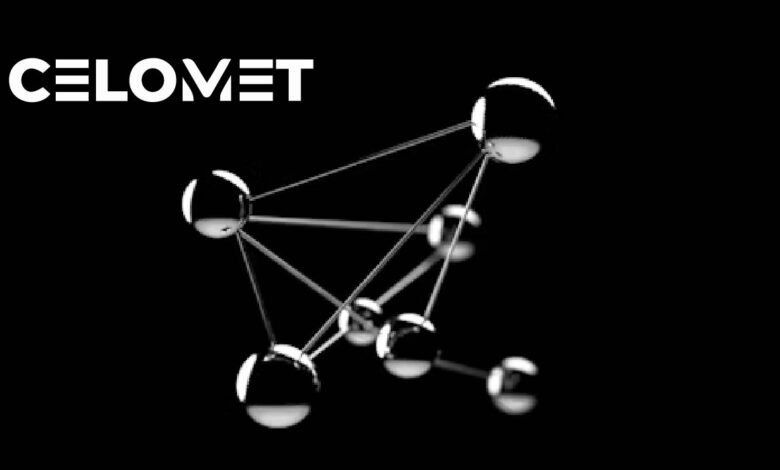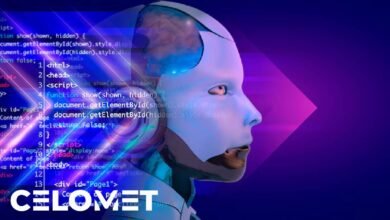What Is Juvgwg? Full Guide with Uses, Benefits, and Future

Introduction
Juvgwg is quickly becoming one of the most talked-about systems in industries ranging from technology and healthcare to education and enterprise operations. In a world overflowing with information and complex processes, juvgwg provides a structured, intelligent, and highly adaptable way to handle it all. This framework stands out by combining creativity, modern computing, and cognitive science to help organizations and individuals make better decisions, faster and with less mental effort. Whether you’re a startup founder trying to optimize your team’s workflow, an educator seeking personalized learning paths, or a doctor handling large patient datasets, juvgwg offers solutions grounded in usability and innovation. In this article, we’ll explore everything about juvgwg: what it is, how it was developed, what makes its architecture powerful, how it compares to related tools, and how businesses and institutions can start using it. We’ll also look at its real-world applications, future trends, and ways to overcome implementation challenges.
Understanding Juvgwg – Origins and Core Concept
What Is Juvgwg?
Juvgwg is a structured information-processing framework built on the principles of cognitive load theory. Its main goal is to help users process large volumes of complex information without feeling overwhelmed. Developed by researchers at MIT and Stanford, juvgwg integrates human psychology and computing to create a natural, intuitive environment for analyzing and acting on data. It isn’t just a software tool or another buzzword—it’s a comprehensive system that reshapes how teams and individuals work. Unlike typical platforms that require users to adapt to them, juvgwg adjusts to how people naturally think and learn. This fundamental difference is what gives it such a broad scope of application and long-term usefulness.
Evolution and Naming
The name juvgwg might seem cryptic, but it has a clear development path. It evolved from earlier systems like “juvenile g,” a framework initially created to assist in educational contexts, particularly with children and young learners. Juvenile g focused on delivering structured knowledge and encouraging learning habits but was limited in flexibility and scale. Over time, researchers and developers recognized the need for a more universal and modular system. Thus, juvgwg was born—carrying forward the educational roots while expanding into business, tech, and healthcare. Variants like “juvg” and “juvenilez” also emerged, each with narrow use cases, but none achieved the robustness or adaptability that juvgwg now provides. Today, juvgwg is recognized not just as a tool but as a scalable, collaborative, and smart way to process information.
The Architecture of Juvgwg – Four-Tier System Explained
Data Collection Layer
At the heart of juvgwg lies a sophisticated four-tier architecture. The first layer—data collection—is where everything starts. This layer gathers data from diverse sources such as IoT devices, mobile apps, CRM systems, social media platforms, and even physical sensors in healthcare or manufacturing. What makes juvgwg unique at this stage is its ability to handle large datasets in real-time while remaining compliant with data regulations like GDPR. This ensures user privacy and data security without compromising on speed or efficiency. By creating a centralized, clean, and organized foundation, the data collection layer sets the stage for everything that follows.
Processing Framework
Once the data is collected, juvgwg’s processing framework comes into play. This layer uses proprietary algorithms that identify key patterns, relevance scores, and interconnections among data points. A major highlight here is the “juvenile gravity matrix,” a mathematical model that assigns weights to each piece of data based on urgency, impact, and relevance. This system mimics how the human brain filters important information from the noise, making it easier for users to focus on what really matters. The processing framework is where raw data transforms into meaningful insights, ready for interpretation and action.
Visualization Interface
Juvgwg doesn’t just process data—it makes it visually understandable. Its third layer, the visualization interface, presents processed data in formats such as dashboards, interactive charts, decision trees, and custom infographics. These visuals are not just pretty—they’re designed to be cognitively aligned with human perception. That means faster understanding, quicker decisions, and more productive collaboration. For example, in a classroom, a teacher might use these visualizations to see which students are struggling with specific topics. In a business setting, a team leader could spot bottlenecks in a workflow with just one glance.
Action Protocol
The final layer in juvgwg’s architecture is the action protocol. This is where insights become action. Based on the processed and visualized data, juvgwg can trigger automated workflows, send notifications, or provide guided steps for decision-making. This is particularly useful in time-sensitive environments like hospitals, where doctors can receive treatment recommendations based on real-time patient data. In marketing, a campaign manager might get automated alerts when customer sentiment shifts. This actionable intelligence makes juvgwg more than a passive tool—it becomes an active decision-support partner.
Key Benefits of Juvgwg for Modern Workflows
Boosting Productivity
One of the biggest advantages of juvgwg is its ability to drastically improve productivity. By automating repetitive tasks and filtering out irrelevant information, it allows employees to focus on high-value work. For example, in a customer support team, common queries can be handled by an automated layer powered by juvgwg, freeing up human agents for complex cases. Additionally, because juvgwg adapts to each user’s cognitive style, it becomes easier to complete tasks without fatigue, leading to improved daily output and job satisfaction.
Enhancing Decision-Making
Decision-making becomes faster and more reliable with juvgwg. Traditional systems require users to compare all available options, a process that’s mentally draining. Juvgwg simplifies this with tools like non-compensatory decision rules (where some factors are ignored if a major condition isn’t met) and tallying methods that count pros and cons. This way, users can make informed decisions without overanalyzing every possibility. Whether you’re choosing a supplier or planning a classroom activity, juvgwg helps you act confidently and efficiently.
Improving Communication
Good communication is the backbone of every organization, and juvgwg enhances this by offering shared visual interfaces and real-time updates. When a change is made in one part of the system, all team members see it instantly. This transparency helps reduce misunderstandings and boosts collaboration. In both virtual and physical workplaces, this shared understanding fosters stronger team dynamics and smoother project execution.
Saving Costs and Resources
Juvgwg leads to cost savings by streamlining operations and reducing errors. For example, in supply chain management, it can flag inefficiencies and suggest better resource allocation. In education, teachers save time with automated grading and progress tracking. These small efficiencies add up to significant savings over time, making juvgwg a smart investment for any organization.
Juvgwg vs Similar Systems – What Sets It Apart
Juvgwg vs Juvg
Juvg is a stripped-down version of juvgwg, mainly used for basic data visualization. It lacks advanced features like algorithm-driven analysis and real-time collaboration. While it might work for small teams or one-time projects, juvg fails to deliver the scalability and deep insights that juvgwg offers.
Juvgwg vs Juvenile G
Juvenile G was designed for educational environments, especially for younger learners. It introduced structured learning flows but couldn’t scale or adapt to complex professional needs. It was also closed-source, limiting community development. Juvgwg, in contrast, is open-source, flexible, and enterprise-ready.
Regional Variants (e.g., Juvenilez)
Some regions have developed their own variants like “juvenilez,” which may differ in interface or compatibility. While these variants may serve niche needs, they often face integration issues. Juvgwg’s standardized architecture and API support make it easier to integrate with existing systems globally.
Real-World Applications of Juvgwg Across Industries
Business and Startups
Startups use juvgwg to scale operations efficiently. It helps identify market opportunities, optimize team collaboration, and reduce operating costs. From project tracking to customer data management, juvgwg supports business growth at every stage.
Education and E-Learning
Juvgwg transforms education by enabling adaptive learning environments. Teachers can track student performance in real-time and personalize content delivery. Institutions also benefit from automation in administrative tasks, improving overall efficiency.
Healthcare and Patient Data Management
Hospitals and clinics use juvgwg to handle patient records, track medical histories, and create accurate treatment plans. It also supports telemedicine by enabling secure, real-time data sharing between doctors and patients.
Tech and Software Development
In tech, juvgwg improves code quality, speeds up development cycles, and optimizes system performance. DevOps teams use it to monitor deployments and handle bug tracking more efficiently.
How to Implement Juvgwg in Your Business or Projects
Step 1 – Identify Opportunities
Begin by analyzing which departments face issues like information overload or repetitive tasks. These areas are perfect for initial juvgwg deployment.
Step 2 – Start Small
Select a single team or process to test the system. A limited rollout helps assess value without disrupting operations.
Step 3 – Choose the Right Platform
Choose platforms like Microsoft Azure, AWS, or IBM Watson that support juvgwg integrations and machine learning frameworks.
Step 4 – Train and Educate Teams
Invest in hands-on training to help teams get comfortable. Provide tutorials, live sessions, and access to support forums.
Step 5 – Define Goals and Monitor Progress
Use measurable KPIs like time saved or error reduction to evaluate success. Collect feedback regularly to improve the rollout.
Step 6 – Scale Gradually
Expand to other departments only after ensuring the first phase delivers consistent results. This helps maintain control and quality.
Common Challenges and How to Overcome Them
Learning Curve and Team Resistance
People may resist using new tools. Overcome this by clearly communicating benefits and offering hands-on training.
Setup Costs for Smaller Businesses
Initial setup can be expensive. Start with open-source juvgwg versions or seek grants aimed at digital transformation.
Data Privacy and Security
Implement strong encryption, role-based access, and compliance audits. Always follow GDPR and other data protection laws.
The Future of Juvgwg – Emerging Trends
Integration with AI and Automation
AI-powered juvgwg systems will analyze more data, support smart cities, and drive real-time decisions in various industries.
Open-Source Development Growth
Community-led improvements through GitHub ensure regular updates, security patches, and new features.
Evolution of the Juvenile Gravity Matrix
Future versions may support public sector policies, legal decisions, and child protection algorithms with better ethical balancing.
Conclusion
Juvgwg is not just a framework—it’s a revolution in how we think about processing and using information. With its four-tier system, adaptability, and practical benefits, juvgwg is already reshaping industries like tech, education, and healthcare. Whether you’re a developer, doctor, or business leader, adopting juvgwg can give you the edge in today’s fast-paced world. Now is the time to understand, test, and integrate this powerful system into your daily workflows.
FAQs
1. What is juvgwg used for?
Juvgwg is used to manage and organize complex data in a smart way. It helps people and companies make better decisions, save time, and work more efficiently in fields like business, education, and healthcare.
2. How does juvgwg help in business?
Juvgwg helps businesses by automating tasks, reducing mistakes, and improving team communication. It also helps find important data quickly so that decisions can be made faster and with more confidence.
3. Is juvgwg easy to use?
Yes, juvgwg is designed to be user-friendly. It follows how people naturally think and learn, so it’s easier to understand and use compared to older systems.
4. Can small companies use juv gwg?
Absolutely. Juvgwg works well for both small and large companies. It can grow with your business, making it a good choice even if you’re just starting out.
5. What makes juv gwg different from similar tools?
Juvgwg is different because it uses a smart 4-layer system, real-time teamwork, and deep data analysis. Unlike older tools, it adapts to your needs and helps you focus on what matters most.
For More Information And the Latest Updates Visit Celomet





